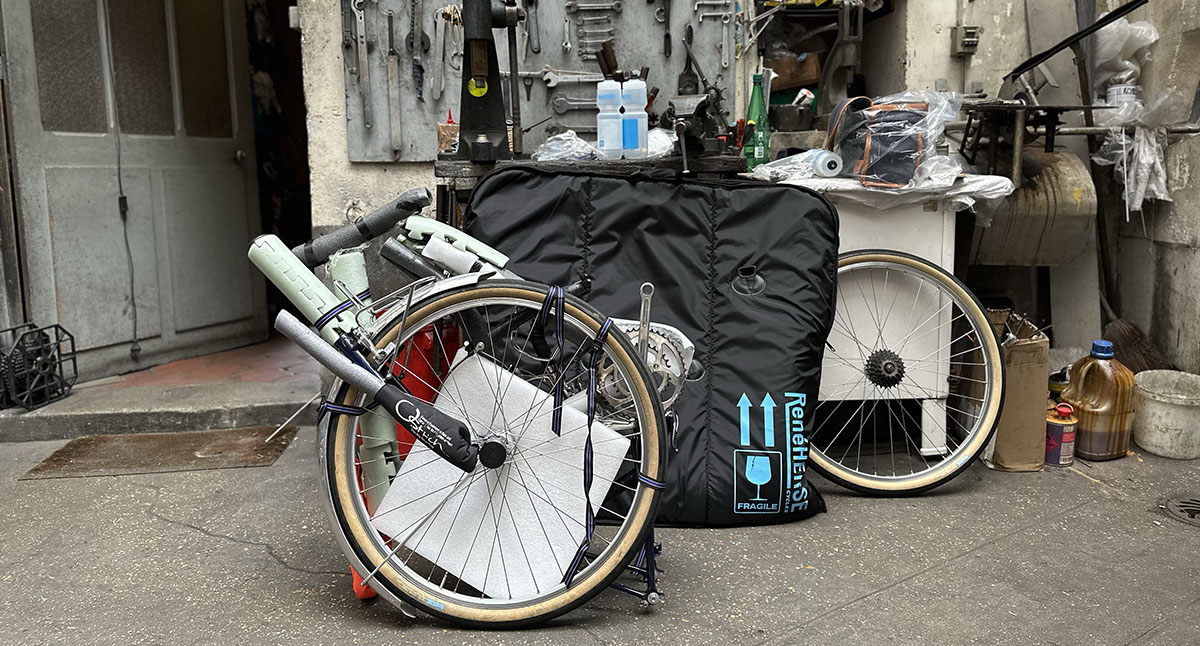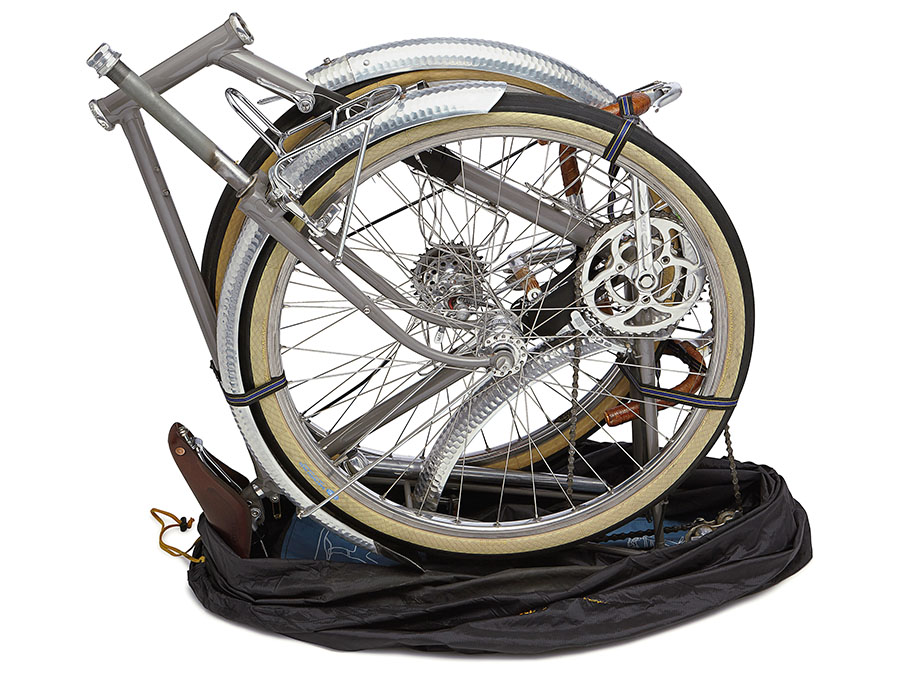Airplane Rinko to Paris-Brest-Paris
With Paris-Brest-Paris, a big part of the adventure is just getting to the start. First you have to qualify, then train, then plan your ride… and finally you have to get yourself and your bike to Paris. Especially your bike.
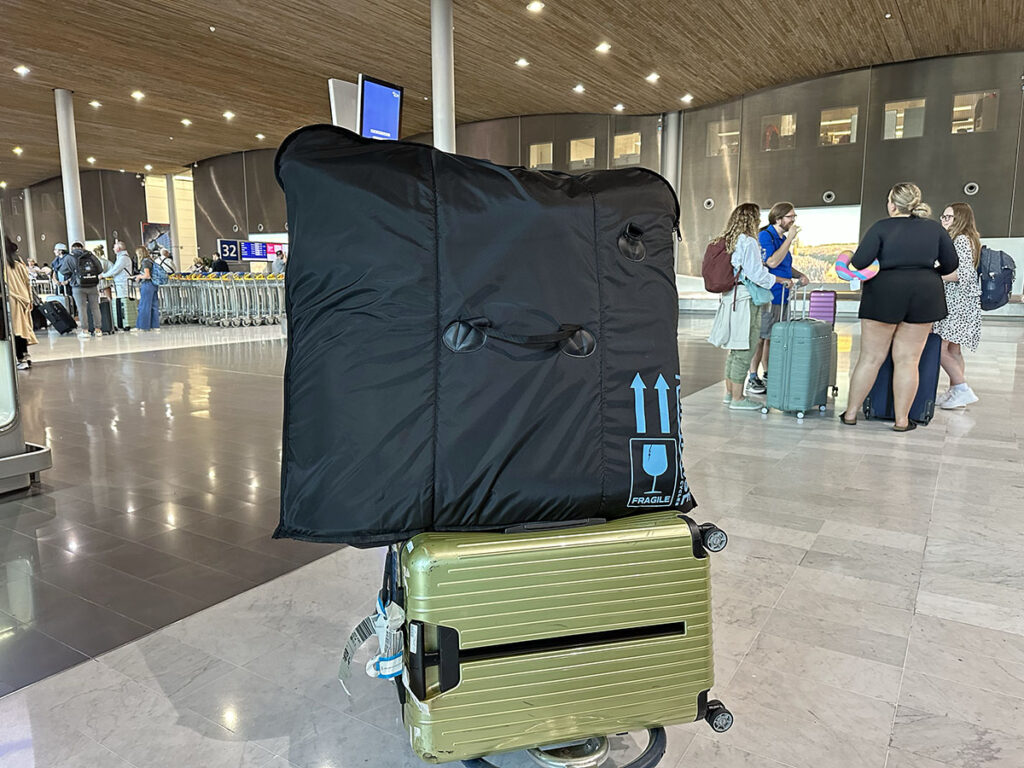
Air travel with bikes has become easier as airlines have realized that cyclists (and not just golfers) are actually good customers. But it’s still not without challenges. There are various strategies for getting your bike on and off the plane safely. Mine is simple: Keep the package as light and small as possible. That way, there’s less need for luggage workers to throw it—or risk injuring their backs. There’s also less risk that the bike—put aside until the end so it doesn’t end up below some heavy suitcases—is left behind because it doesn’t fit into the almost-full luggage hold. And at the destination, a small bag fits into a standard taxi—or even on a train. That takes a lot of stress out of the last leg of the trip. (Having lugged huge bike cases across the Paris on the Metro, I can tell you it makes a big difference!)
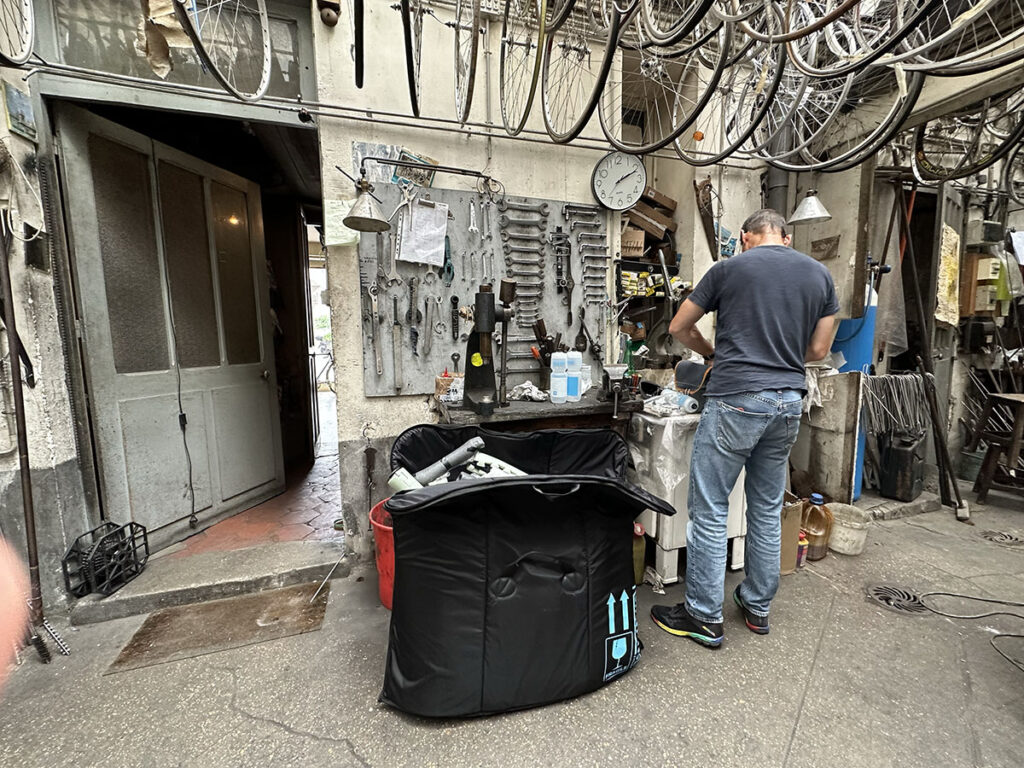
Of course, simply handing your Rinko’d bike in its superlight bag is a risk few of us are willing to take. (We once had to just do that in Japan when a train was cancelled due to a typhoon, and we had to take a plane—but not all baggage handlers are as gentle as those of JAL in Sapporo and Tokyo.) That’s where our Rene Herse airplane bag comes in handy.
Olivier Csuka of Cycles Alex Singer had invited me to visit their shop and assemble my bike there. Usually I put it together on the floor of my hotel room or, if necessary, on the sidewalk in front of a train station. Here’s how ‘Airplane Rinko’ works.
Rinko was developed in Japan to take bikes on trains as normal luggage. The Alps system that we use packs the smallest and requires the fewest modifications of the bike. The bike is split into four parts: Frame, fork with front wheel (including fender and rack), rear wheel, and handlebars. This reduces the size of the bike to the dimensions of the frame alone (which is remarkably small). The four parts are strapped together, a superlight bag is draped over it to protect other passengers and luggage, and it’s ready to go on the train. The same basic technique is used for ‘Airplane Rinko,’ with a few modifications.
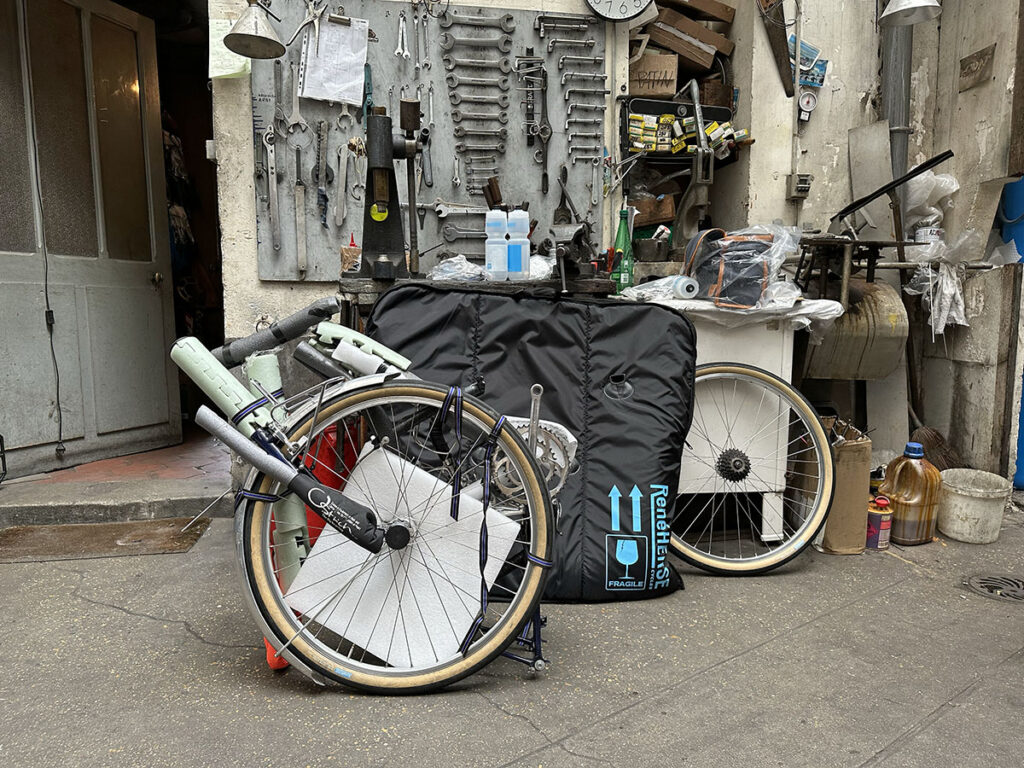
Here’s how the package looks when it’s removed from the bag. (One advantage of this Rinko system is that the package is free-standing.) To make the package less likely to shake loose, the rear wheel (and its fender) go into a separate pocket in the Rene Herse Airplane Rinko Bag. (Strapping two parts together is more secure than three.) I also used one extra strap to make the package even more stable.
I wrap most frame tubes with foam pipe insulation. Caps go on the axle ends and on the end of the steerer tube. The most important part is to protect the frame from the protruding quick release on the front axle. That’s why a thick piece of high-density foam is sandwiched between the two parts of the bike.
The biggest risk is that an airport security person takes off the straps and can’t figure out how to put them back. Fortunately, that’s not necessary, as they can take out the entire package and inspect it without taking it apart. To make sure, I included a note in English and French “Do not remove the straps, please.”
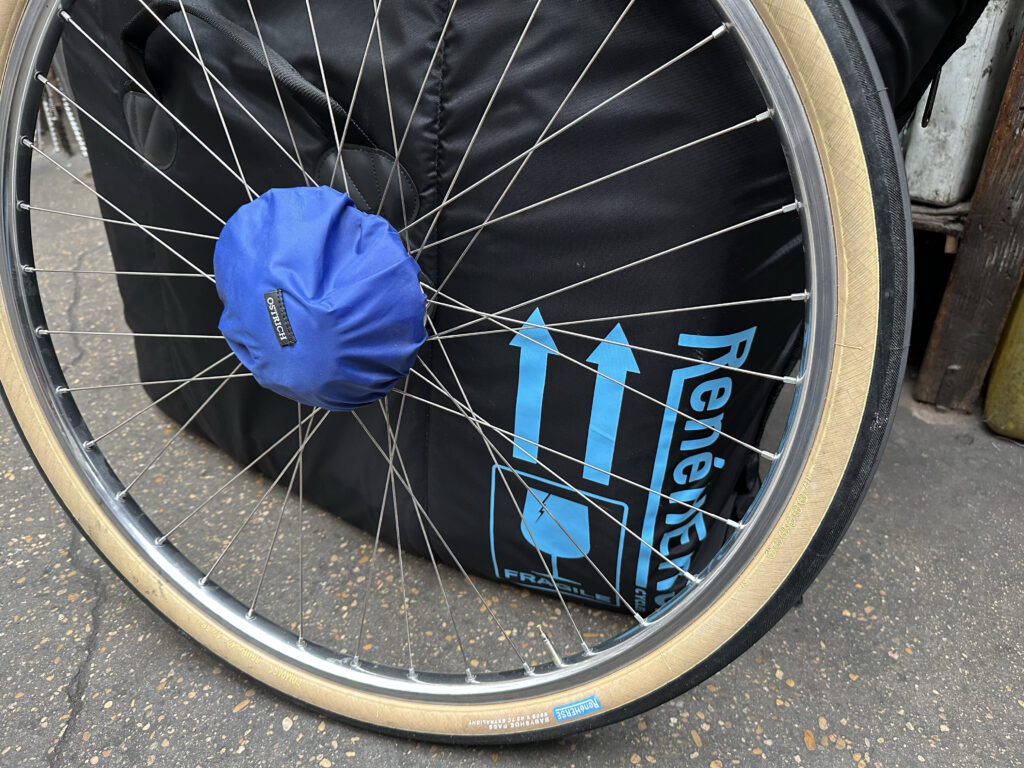
The Ostrich Disc Rotor Cover is useful to cover the cassette, so bag and contents don’t get dirty with chain oil.
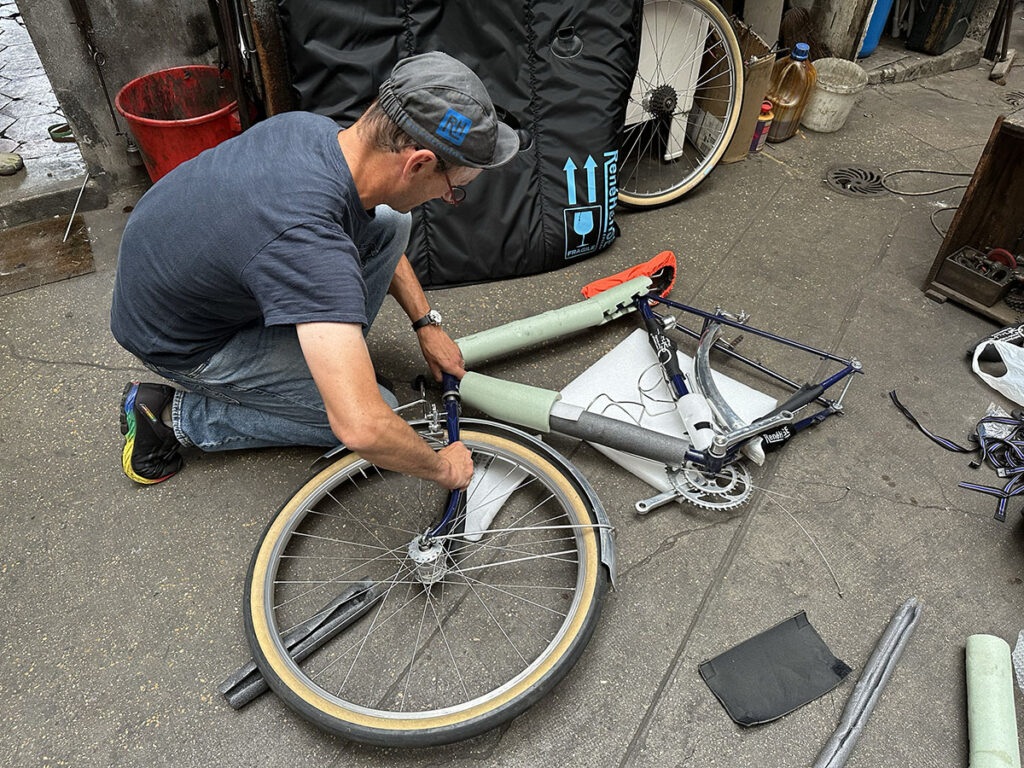
Reassembly is straight-forward. First insert the fork into the frame.
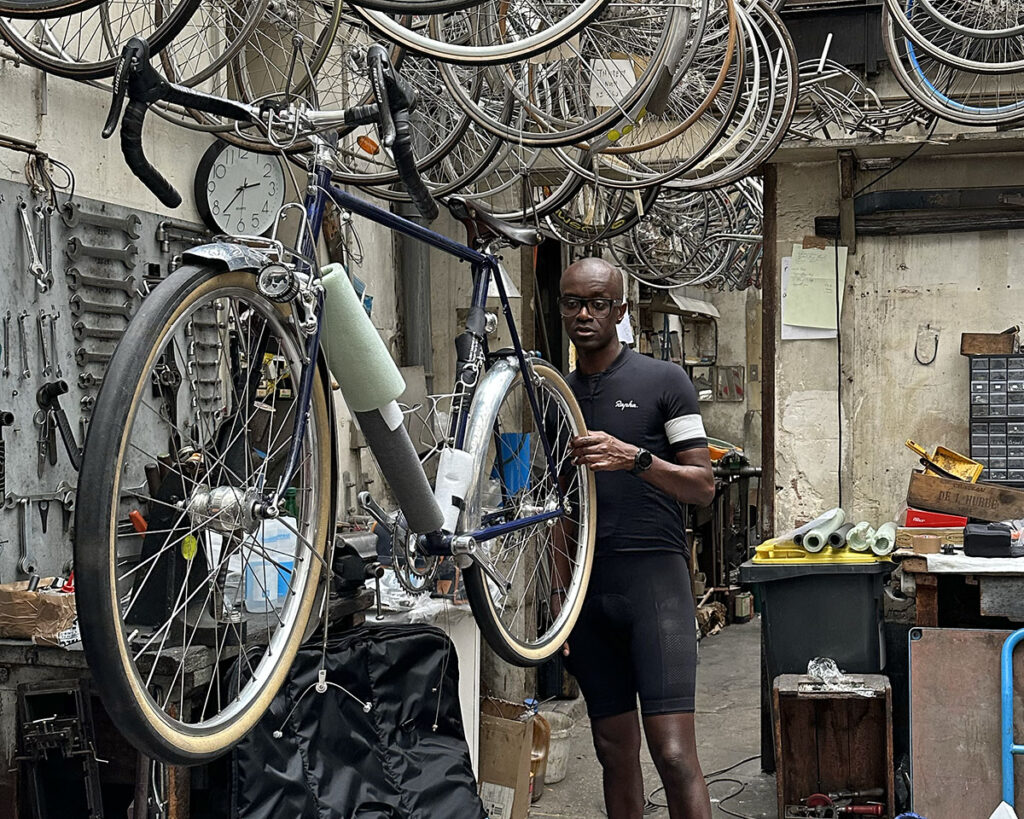
Install the rear wheel and handlebars.
What is JaBig, the international DJ and world traveler doing in this photo? He is riding from the North Cape to the southern tip of Europe to raise money for World Bicycle Relief. He timed his ride so we could meet in Paris. Merci, mon ami!
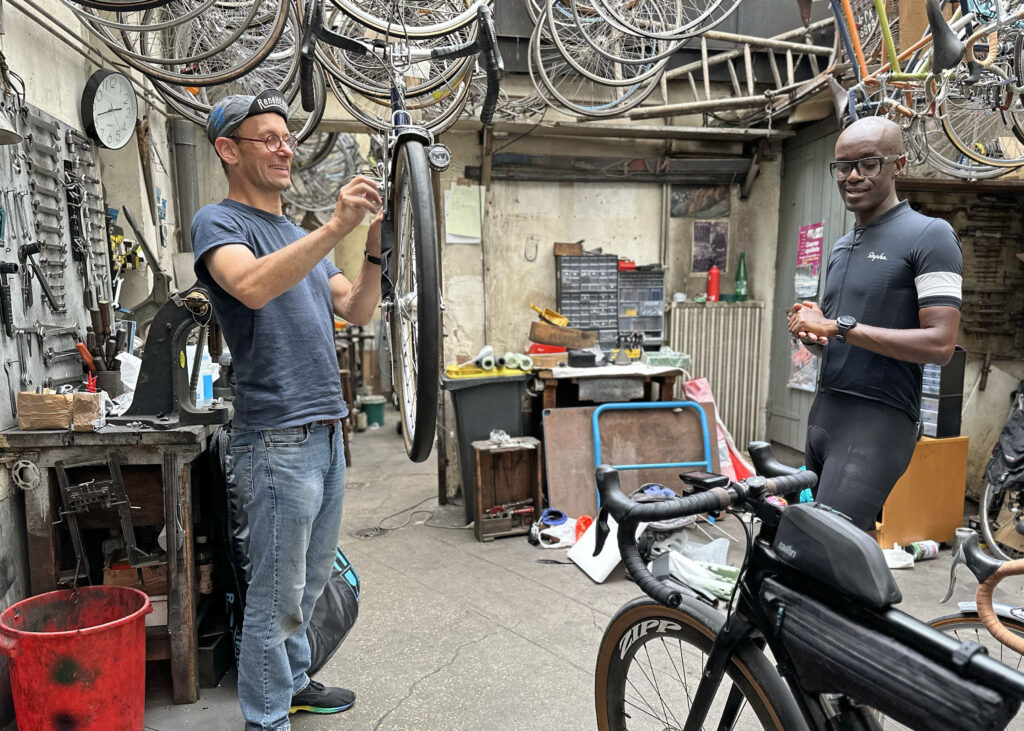
We caught up and chatted as I went over the bike to make sure nothing had been damaged or shaken loose during the flight. Good news: Not a single screw needed tightening.
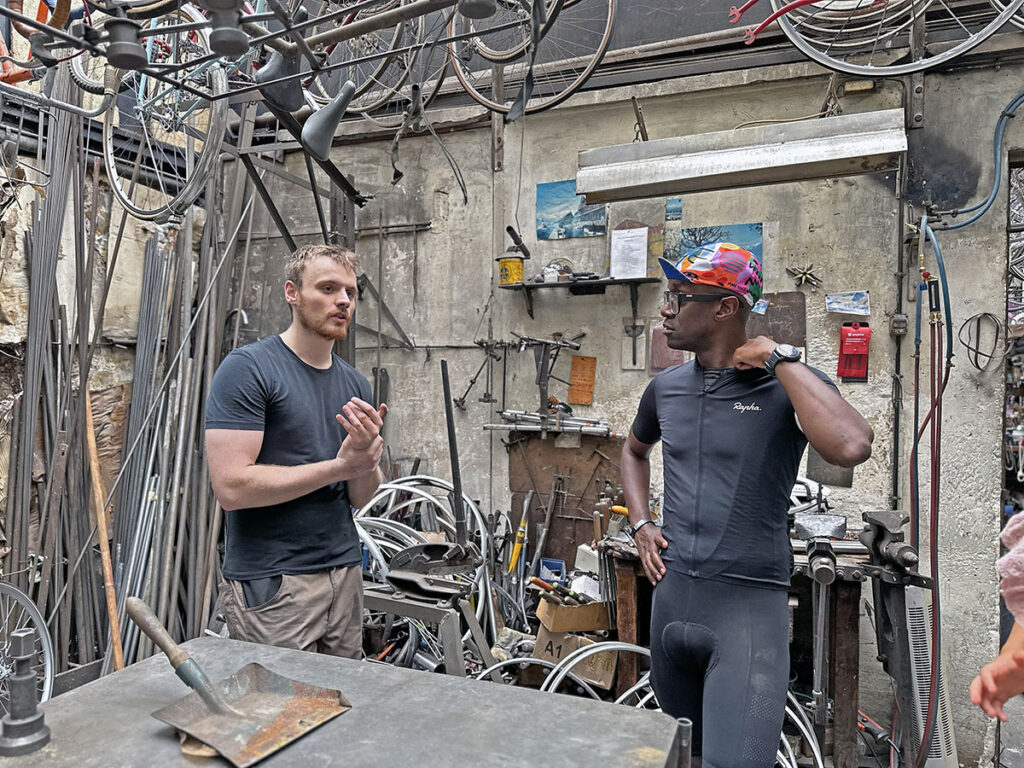
Walter, son of Olivier Csuka and the fourth generation to work at Cycles Alex Singer, explained to JaBig how they make frames and what it takes to get your own custom-made Alex Singer.
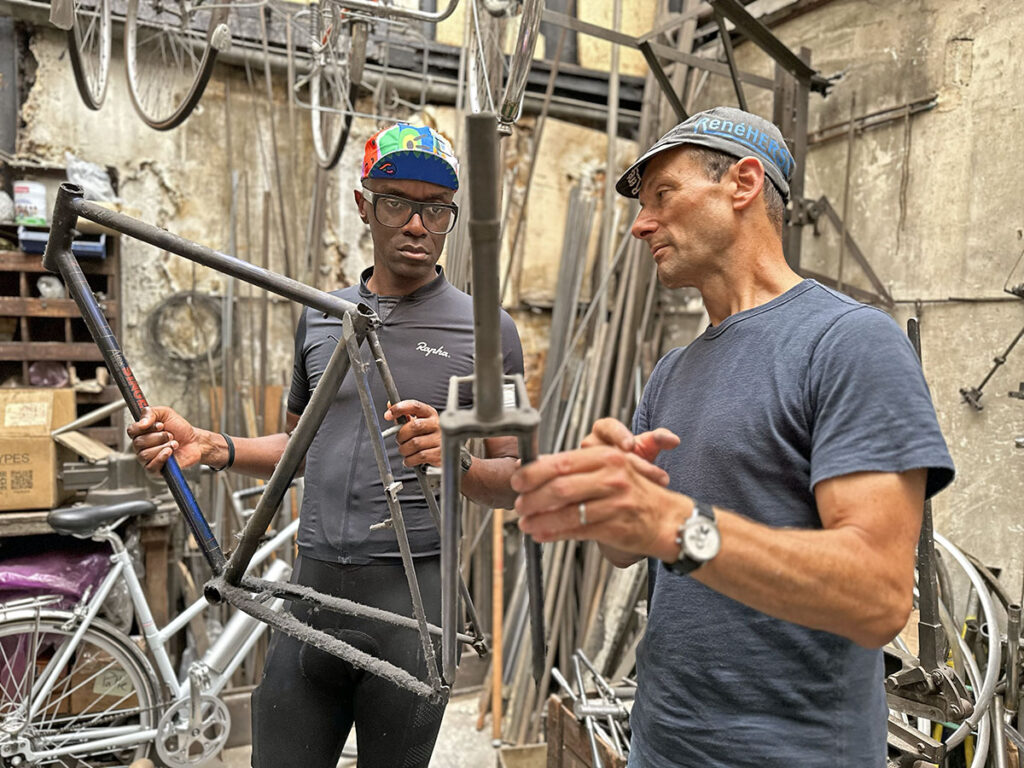
He marveled at a superlight frame and fork from the 1946 Concours de Machines: “That’s incredible—it feels as light as my carbon OPEN U.P.P.E.R.!”
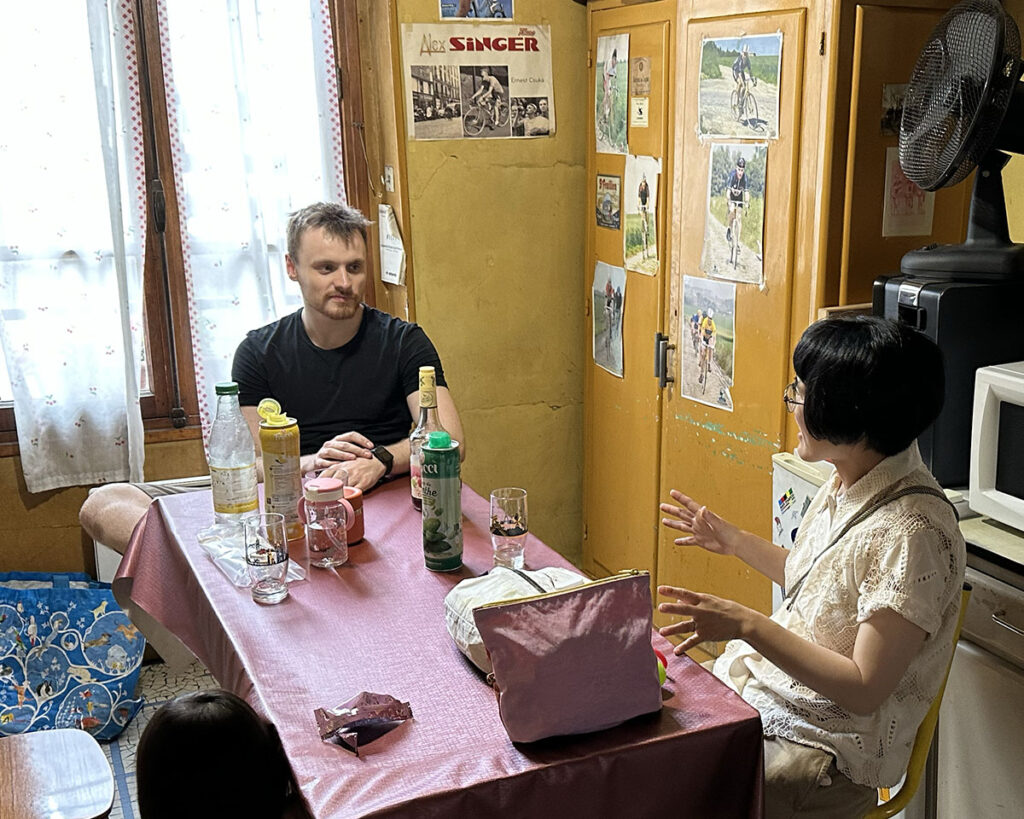
Meanwhile, Natsuko and Walter went upstairs for the customary afternoon tea/coffee/cold drink and discussed the future of handmade bicycles.
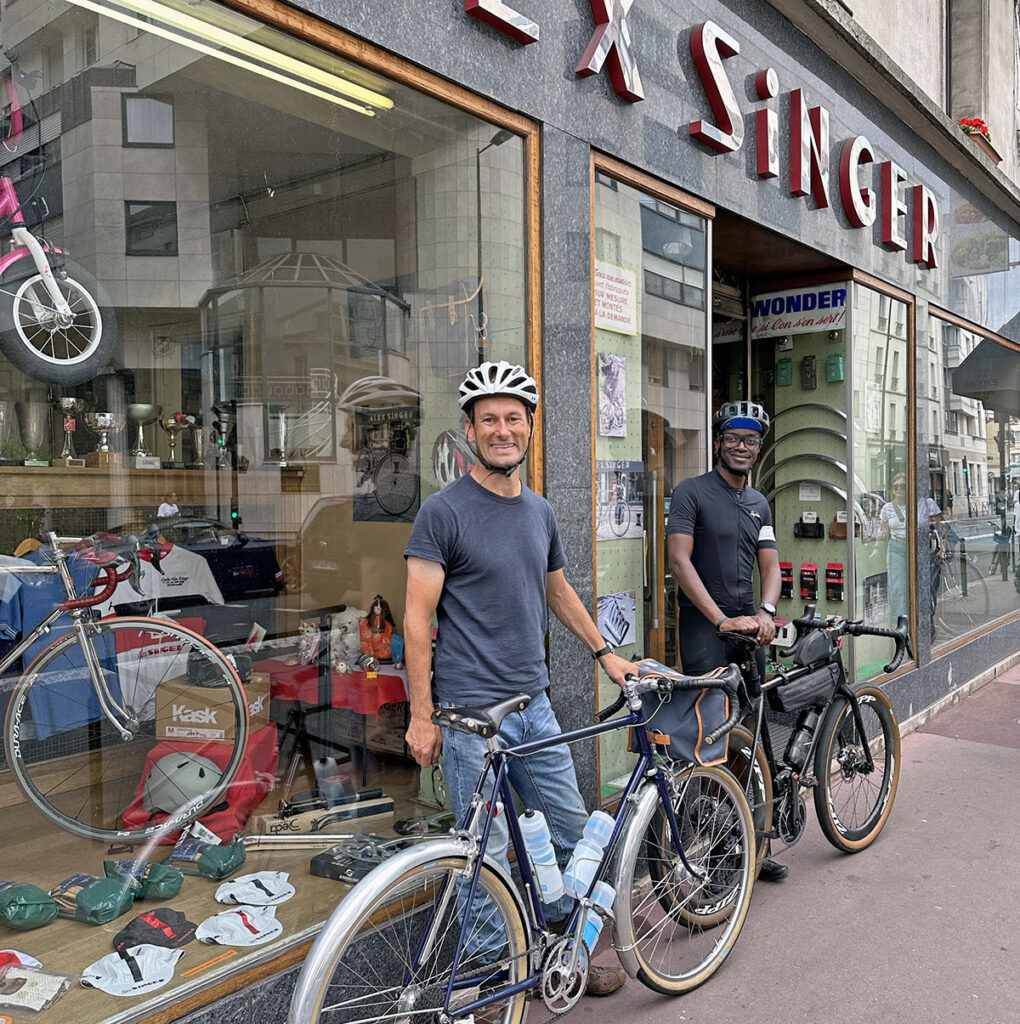
It was time for JaBig to leave: a great opportunity for a quick test ride as I accompanied him through Paris rush hour traffic. He’s adept at jostling for position with taxis and buses, and it was fun to speed across the cobblestones together.
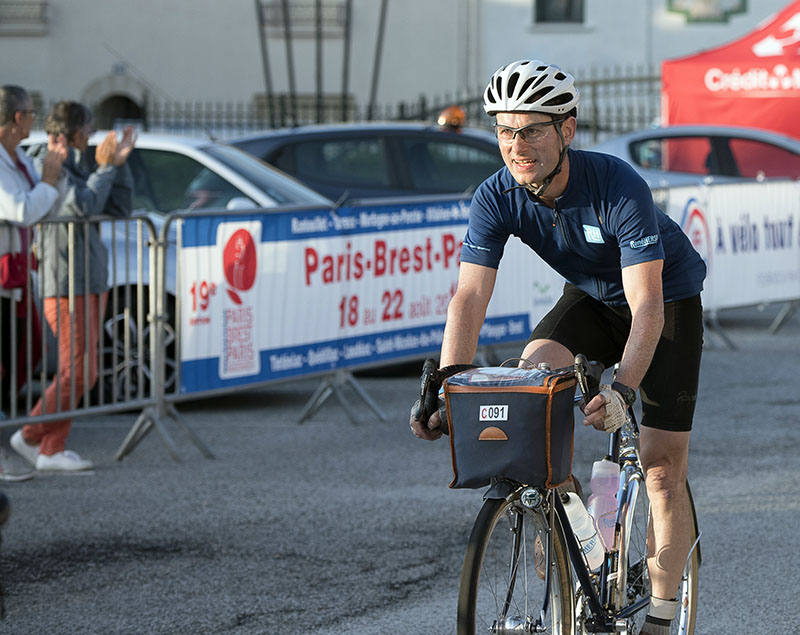
As you read this, I’ll probably already have started my 1200 km ride from Paris to Brest and back—I start at 4:30 p.m. French time. The photo above shows the 2019 edition. This. year, my number is C174. You can follow all riders at the live tracker that shows when they check into the various controls.
Further Reading:
- Paris-Brest-Paris tracker: https://track.rtrt.me/e/CC-2023#/tracker
- Rinko products and bags in the Rene Herse program.


